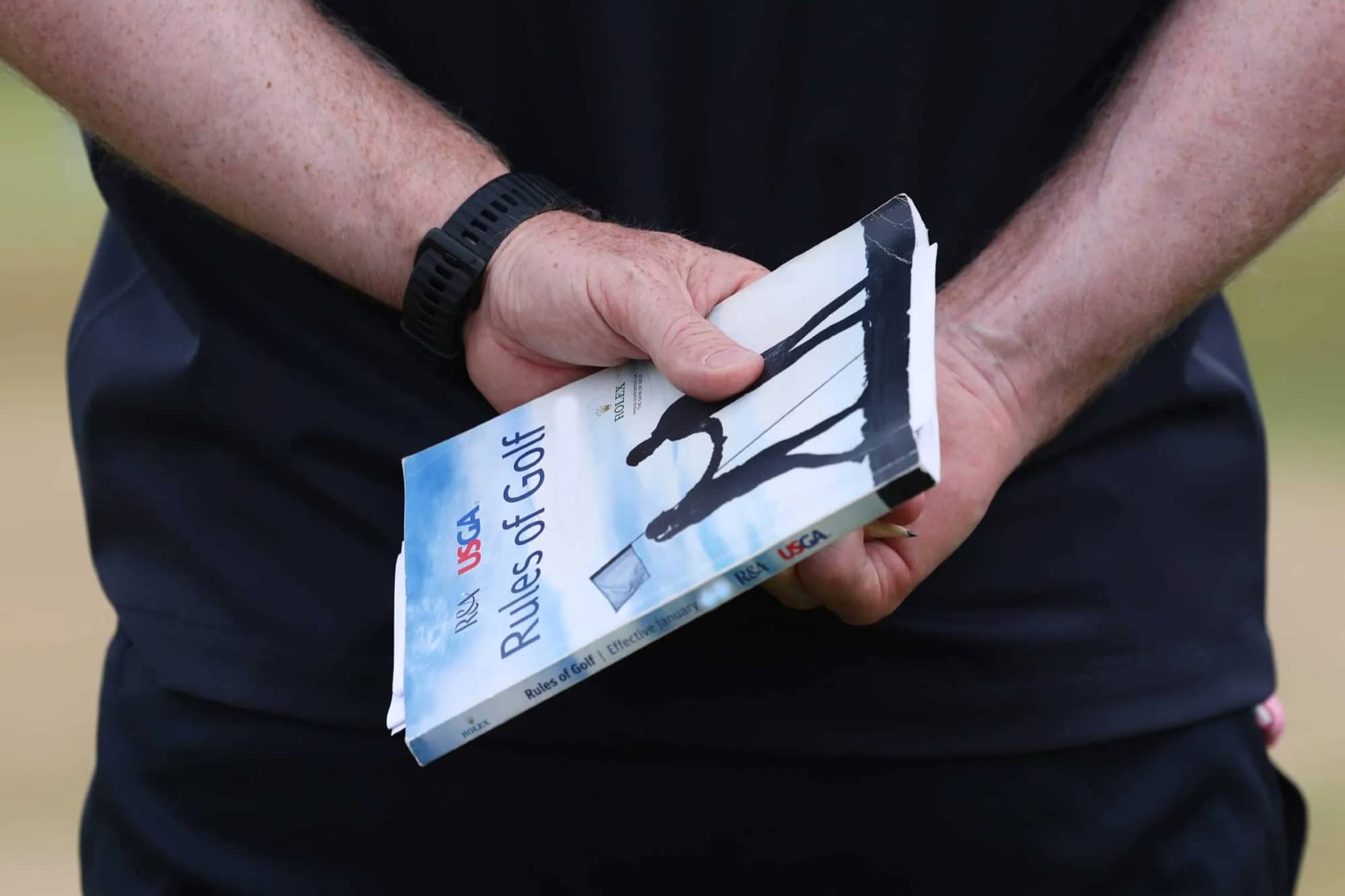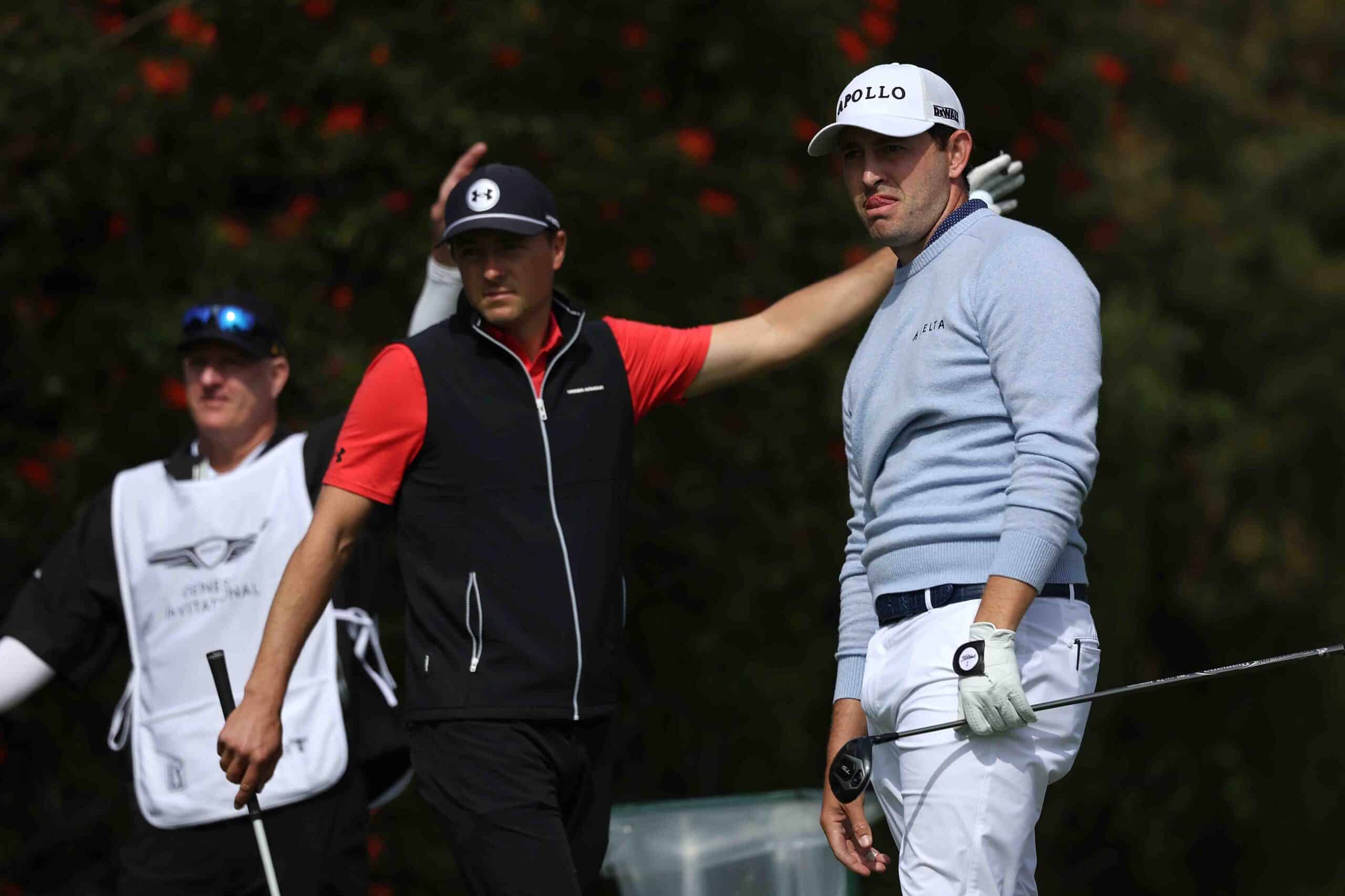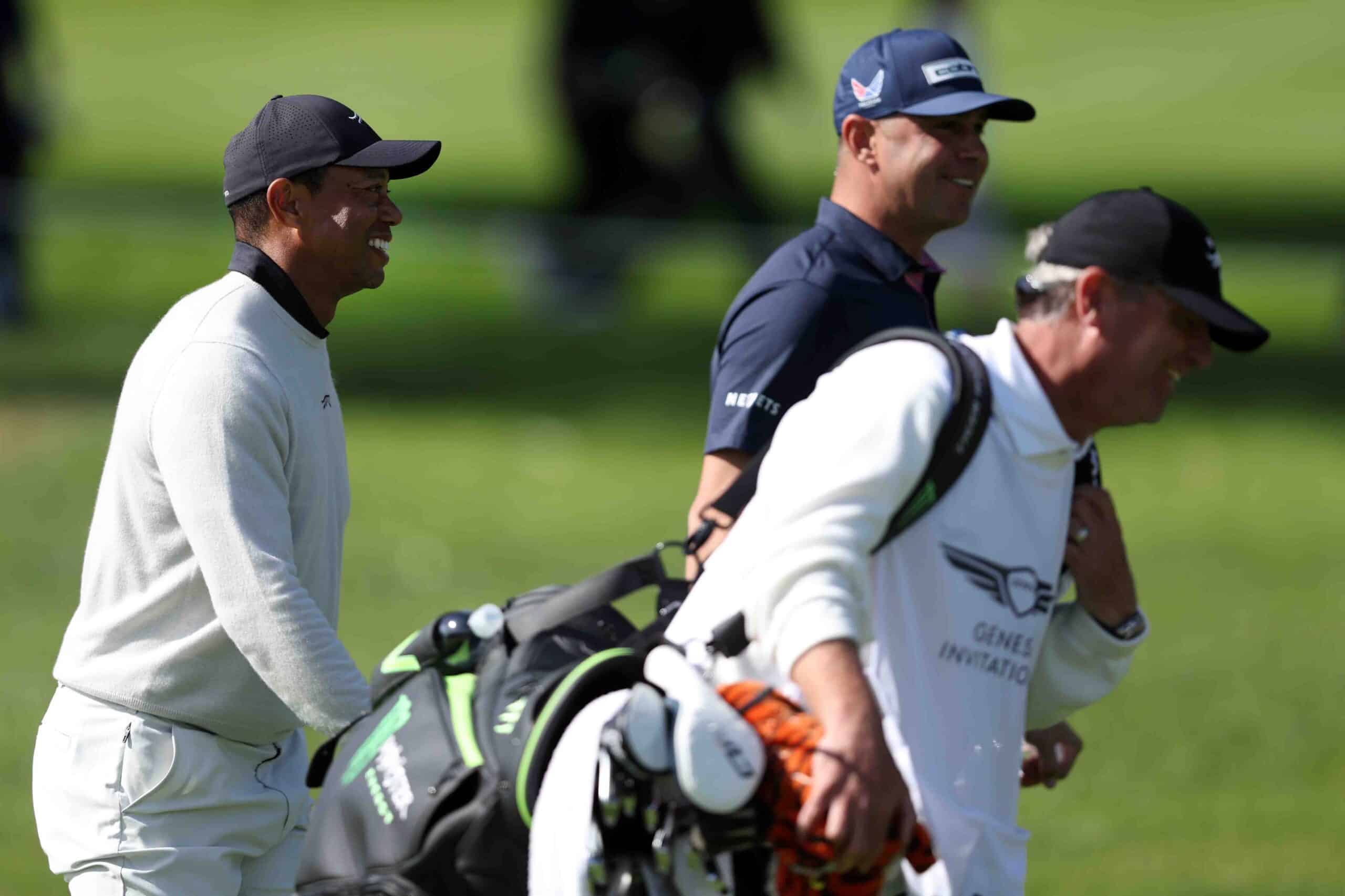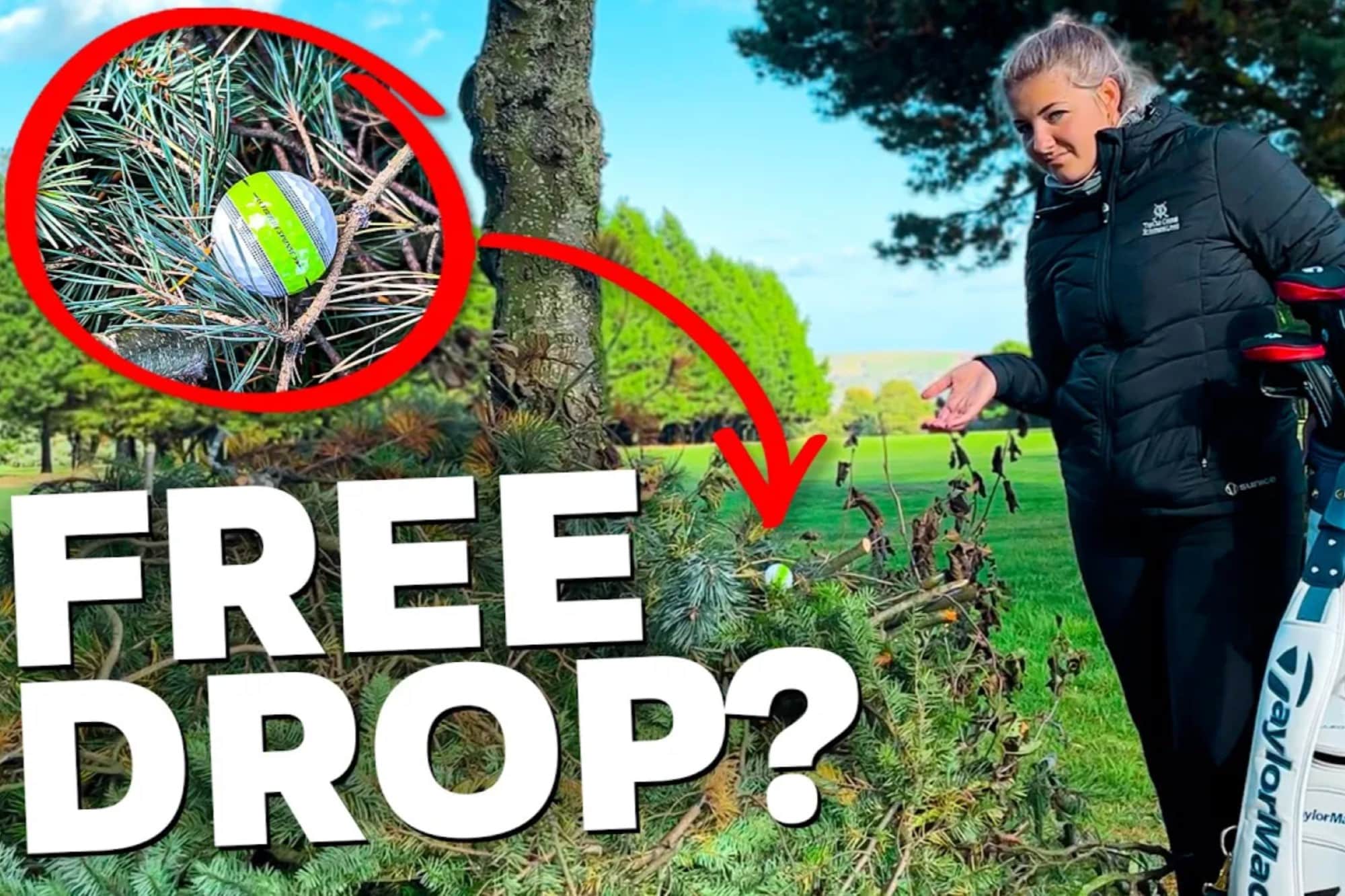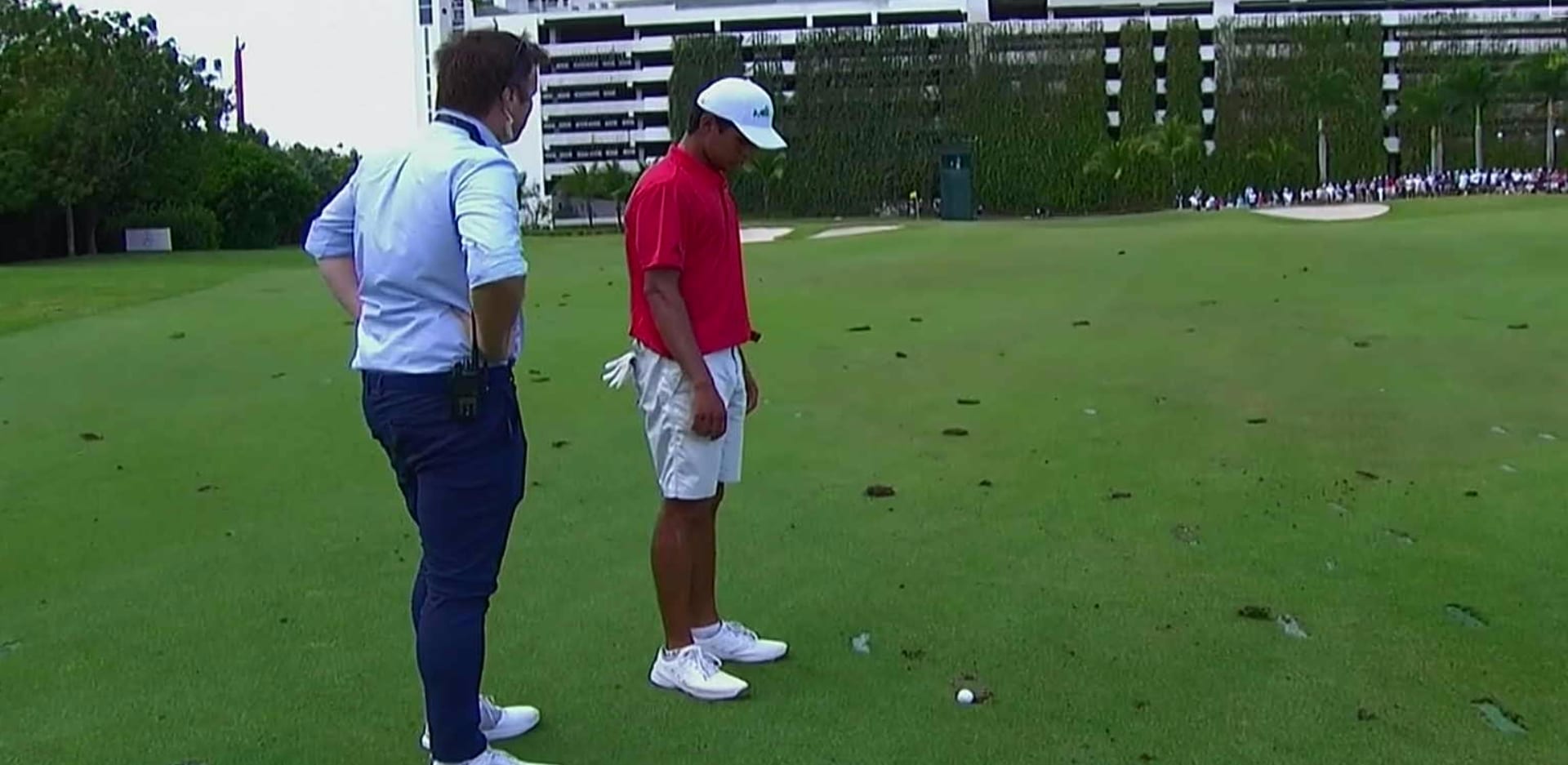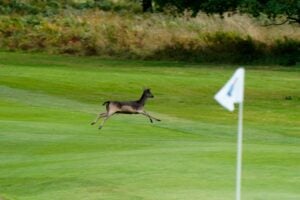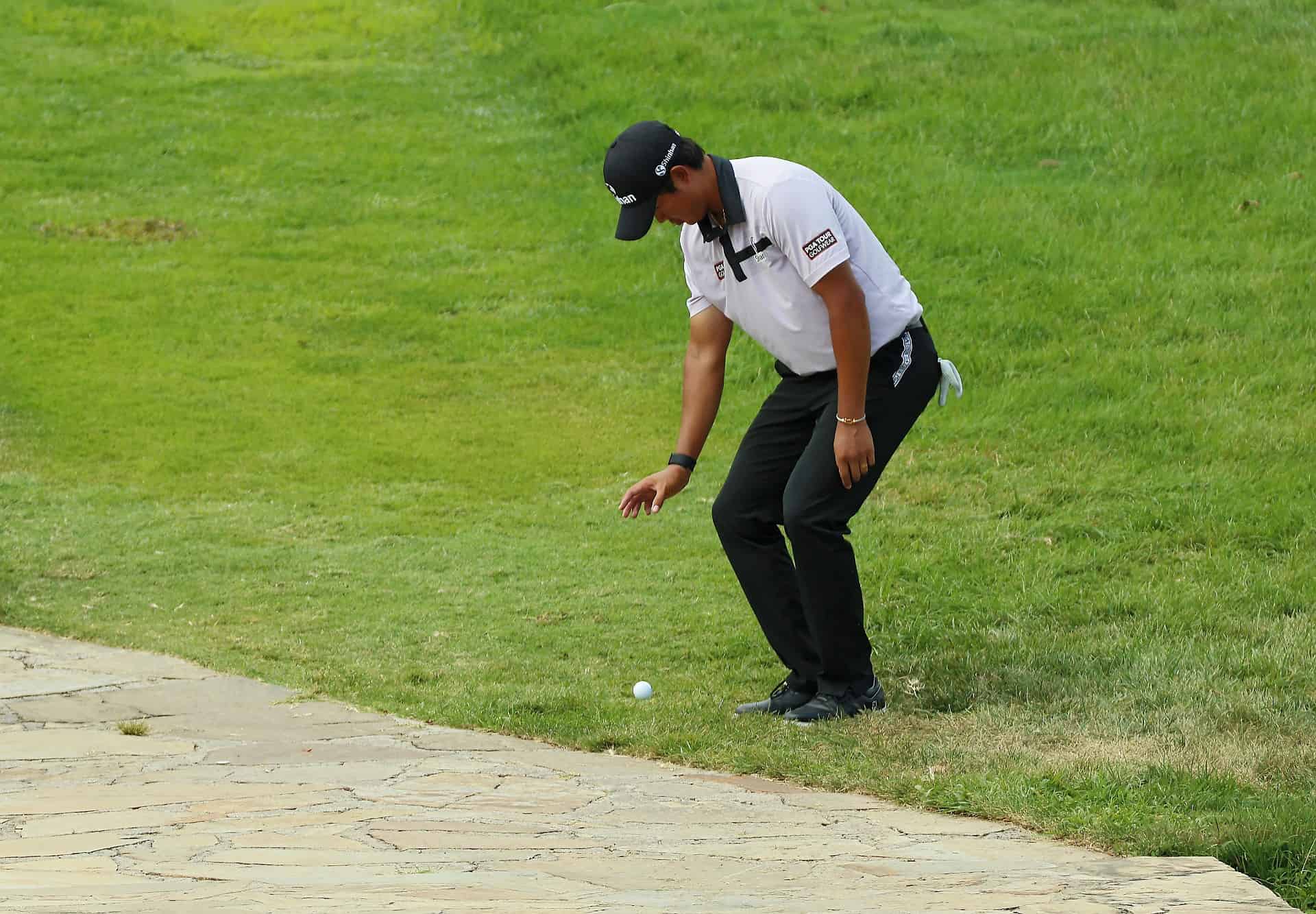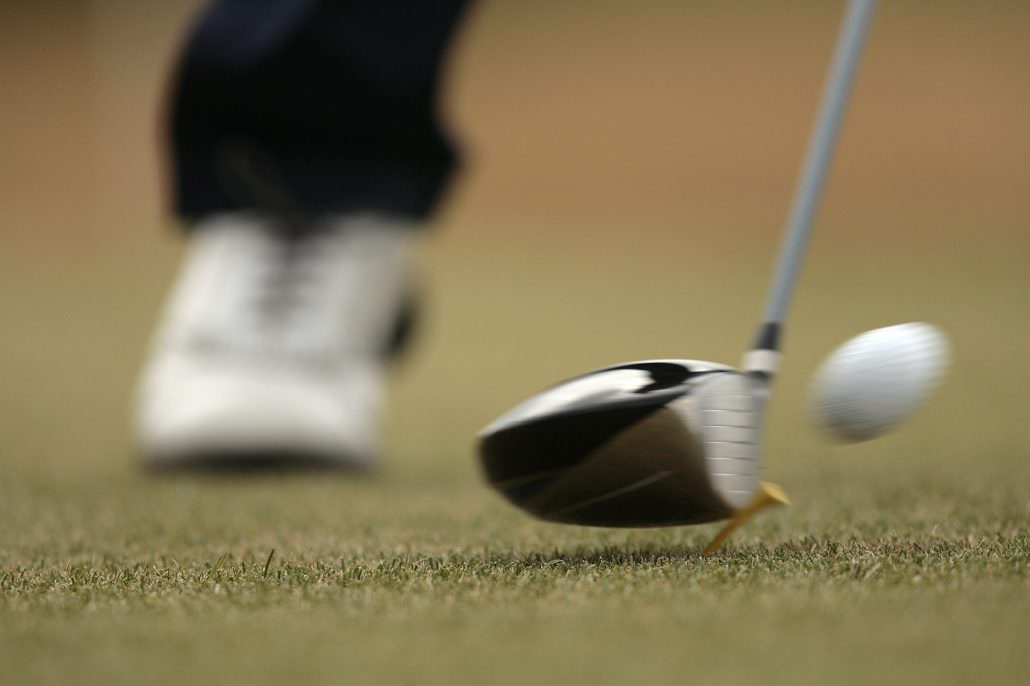
Can you use any part of the club to hit a ball?
I can spend hours watching those trick shots on the internet. They flick them, scoop, push, smack – it’s quite incredible what they can do with a club, a golf ball, and a bit of practice.
But, as entertaining as they are, you probably wouldn’t take many of those shots to the course with you.
That’s because the Rules of Golf are pretty strict on how you can make a stroke and what’s out of bounds – if you’ll excuse the pun.
It’s all laid out in Rule 10.1a, so let’s get stuck in.
What part of the golf club hits the ball?
What is a stroke?
Let’s take a detour first to the definitions and remind you what constitutes a stroke. It is the “forward movement of the club made to strike the ball”.
What do we have to do when making a stroke?
You’ve got to fairly strike at the ball with “any part head of the club”. Rule 10.1a adds that this needs to be done in such a way where there is “only momentary contact between the club and the ball”.
Pushes, scrapes, and scoops? They are all out and you’ll get the general penalty (two strokes or loss of hole in match play) if you do one of these.
What if I hit the ball more than once?
Ah, the old dreaded double hit. This used to come with a sanction attached before the 2019 Rules of Golf came into effect. These days, if it’s accidental, it’s of no consequence whether your club hits the ball more than once. It counts as a single stroke and there is no penalty.
What is a push, a scrape, or a scoop?
You can probably guess but the Rules – and specifically a clarification to Rule 10.1a – do it for you. It gives three examples, one for each of our specific ‘don’t do these’ moments.
So here’s a push: A player holes a short putt by hitting the ball with the bottom of the clubhead, using a motion similar to that in billiards.
This is a scrape: Moving a club along the ground and pulling it towards you.
And, last but not least, the scoop: Sliding a club underneath and “very close to the ball” before lifting and moving it by using a “forward and upward motion”. All clear?
Can something else get in the way of club and ball during a stroke?
This could be a Rules of Golf explained column on its own. This is found in another clarification to Rule 10.1a and It’s a lot of fun.
In the first LIV Golf Invitational at Centurion, with his ball up against a boundary, Phil Mickelson asked the referee if he could hit the fence to move the ball. The answer was that he could.
He decided against it, but he’d referenced a little-known part of the Rules that says that, to fairly strike a ball, the clubhead doesn’t necessarily have to make contact with it.
So if your ball is in bounds but up against Phil’s boundary, for example, you can step out of bounds and clatter the fence to shift it.
It might make a mess of your club, and who knows what it will do to your score, but you won’t have breached the rules.
Steve Carroll

A journalist for 25 years, Steve has been immersed in club golf for almost as long. A former club captain, he has passed the Level 3 Rules of Golf exam with distinction having attended the R&A's prestigious Tournament Administrators and Referees Seminar.
Steve has officiated at a host of high-profile tournaments, including Open Regional Qualifying, PGA Fourball Championship, English Men's Senior Amateur, and the North of England Amateur Championship. In 2023, he made his international debut as part of the team that refereed England vs Switzerland U16 girls.
A part of NCG's Top 100s panel, Steve has a particular love of links golf and is frantically trying to restore his single-figure handicap. He currently floats at around 11.
Steve plays at Close House, in Newcastle, and York GC, where he is a member of the club's matches and competitions committee and referees the annual 36-hole scratch York Rose Bowl.
Having studied history at Newcastle University, he became a journalist having passed his NTCJ exams at Darlington College of Technology.
What's in Steve's bag: TaylorMade Stealth 2 driver, 3-wood, and hybrids; TaylorMade Stealth 2 irons; TaylorMade Hi-Toe, Ping ChipR, Sik Putter.


